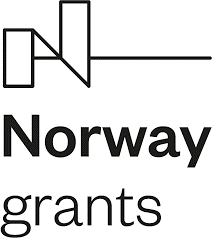

Project managers: dr. Benita Ortega-Berlanga and prof. Tomasz Pniewski
No. 2020/37/K/NZ7/02387
Despite massive vaccination programs, Hepatitis B Virus (HBV) remains the major cause of liver diseases. Efficacy of commonly used preventive vaccines, based on HBV small surface antigen (S-HBsAg), is not absolute, while those more effective, containing additionally the medium and/or large surface antigen (M/LHBsAg) are sparsely used due to high cost. In the result, estimated 2 billion people worldwide suffer from hepatitis B, including over 250 million with chronic hepatitis B (CHB), and 600 thousand patients die annually from CHB complications, mostly in developing countries. Therefore, more effective but at the same time economically feasible and commonly available preventive vaccines and CHB therapeutic vaccines, are particularly welcome.
Currently investigated CHB immunotherapies, including therapeutic vaccines, are aimed to restore HBVspecific cellular response, which can be supplemented by the humoral one. The main component of currently tested CHB therapeutic vaccines is the core antigen (HBcAg) assembled into virus-like particles (VLPs) and triggering mostly Th1 response, which can be supplemented with subunits of the HBV surface antigen (HBsAg) or their immunodominant domains - primarily Th2 inducers.
VLPs, including these assembled by HBcAg, are highly ordered viral protein structures that can be used as
vaccine platforms for delivering antigens. Antigens loaded on the surface of VLPs are therefore presented in a highly ordered structure.
Plant-derived antigens, assembled into VLPs, are considered alternative vaccines, due to low cost, biosafety, bioactivity, and possibility of oral immunisation. Immunogenicity of plant-produced S-HBsAg or HBcAg has been already proved. In preliminary studies both antigens, when used in parenteral or injection-oral immunization, induced significant response of proper polarization, Th2 or Th1, respectively. These results indicate that key epitopes of both antigens, combined in one type of chimeric VLPs, can induce the immune response of mixed Th1/Th2 polarization, required for CHB therapy.
The main goal of this project is the development and the determination of immunogenicity of novel types of chimeric VLPs - formed by plant-produced HBcAg displaying key HBsAg epitopes: aSHBs and ΔpreS1 as well as TransLocation Motif (TLM) – enhancing permeability and immunogenicity of VLPs. In details – study is aimed to explain mutual effects of HBcAg and HBsAg epitopes, together with impact of TLM and mosaic structure of VLPs on the efficacy and type of evoked immune response. The hypothesis of the project is that plant-produced chimeric VLPs formed by HBcAg displaying HBsAg epitopes can induce mixed immune response of dominant Th1 polarization, but supplemented by Th2 polarization particularly desired for CHB therapy.
The project will be realized in consecutive milestones:
• Obtaining spectrum of VLPs of two types: ‘monoantigenic’- assembled exclusively by one type of monomers, i.e. HBcAg with fused aSHBs or ΔpreS1 epitope, and 2) mosaic, assembled by unaltered HBcAg and HBcAg epitope, both types including variants with TLM motif.
• VLPs expression in Nicotiana benthamiana plants by transient transformation followed by selection of the most effective and stable variants.
• Purification and quantification of VLPs expressed, followed by structural analysis (ELISA, DLS, TEM and supplementary western blot and HPLC) of the obtained VLPs.
• Immunogenicity determination of chimeric VLPs in animal (C57BL/6 mice) trials. Complex characterization of humoral and cellular immune response after administration of particular types of particles, including: assay of total antibodies, IgM and IgG and IgG isotypes; circulating WBC; splenocyte subpopulations: B, CD4/Th1, CD4/Th2, CD4/Treg, CD8; and cytokines: IFN-γ, TNF-α, IL-12, IL-4 and IL-10, will enable evaluation of proportion of Th1 and Th2 polarizations.
Optimized production of chimeric VLPs together with determination of the immune response type will bring new data on the interaction effect of different types of epitopes, as well as have potential implications for immunology, prophylaxis, therapy, other medical applications and plant biotechnology. The results of the project will constitute indispensable basis before studies on further development of vaccination and studies on therapeutic effects of developed VLPs in the liver and the entire organism in transgenic mice with CHB, next in CHB patients and in prospect - for future CHB therapies.
This project is financed within the NSC POLS scheme (Norway Grants 2014-2021).
Copyright Institute of Plant Genetics of the Polish Academy of Sciences